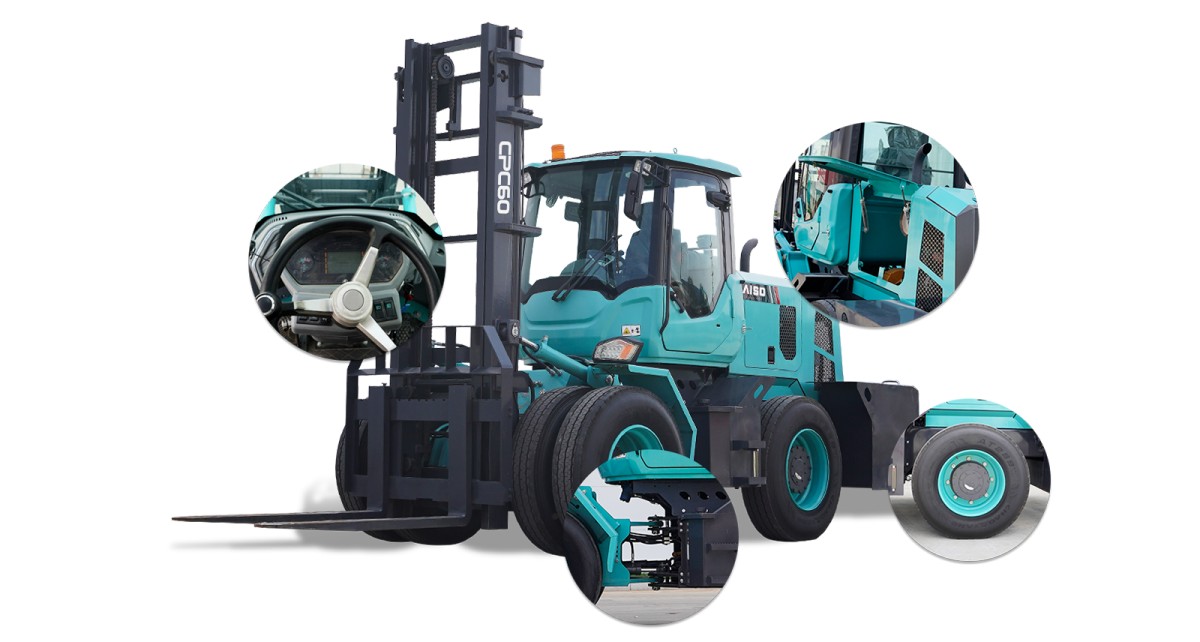NEWS
Raiso off-road forklift is specially designed for working in uneven or harsh environments, with strong structure, durability and flexibility. Suitable for construction yards, ports, logistics yards, mines, quarries and other working environments.
The main differences between standard forklifts and rough terrain forklifts lie in their application scenarios and design features. Here's a breakdown of the key distinctions:
1. Application
Standard Forklift:
Typically used on flat, well-maintained surfaces such as factories, warehouses, and logistics centers.
Suitable for indoor environments or relatively smooth outdoor areas.
Rough Terrain Forklift:
Designed for uneven terrains like sand, mud, snow, grass, or construction sites.
Commonly utilized in farms, forestry, mining areas, and other challenging environments.
2. Wheels and Chassis
Standard Forklift:
Equipped with solid or pneumatic tires, usually of smaller size.
Low chassis clearance, optimized for flat surfaces.
Rough Terrain Forklift:
Fitted with large pneumatic tires, often with deep treads for increased traction.
High chassis clearance to navigate over obstacles such as pits and rocks.
3. Power System
Standard Forklift:
Powered by internal combustion engines, electric motors, or hybrid systems.
Moderate power output, as minimal power is needed in flat working conditions.
Rough Terrain Forklift:
Primarily diesel-powered, with robust engines to handle rough terrain and heavy loads.
Many models feature four-wheel drive for enhanced mobility.
4. Steering System
Standard Forklift:
Designed for tight turning in confined spaces with small turning radii.
Focused on precision handling.
Rough Terrain Forklift:
Often equipped with flexible four-wheel steering or advanced drive systems to tackle complex environments.
5. Structure and Attachments
Standard Forklift:
Features a straightforward structure with basic fork arm designs.
Some optional attachments available, but not ideal for heavy-duty operations.
Rough Terrain Forklift:
Built with reinforced frames and sturdy fork arms.
Engineered for durability and harsh working conditions.
6. Cost and Maintenance
Standard Forklift:
Generally more affordable with lower maintenance costs.
Extended lifespan due to operating in less demanding environments.
Rough Terrain Forklift:
Higher initial purchase cost and maintenance expenses.
Regular servicing required to maintain performance under tough conditions.
In brief summary, standard forklifts are best for efficient operation in flat and indoor environments, while rough terrain forklifts excel in rugged outdoor settings requiring power and mobility. The choice depends on the specific job environment and operational needs.
Raiso machinery has 3.5 tons to 6 tons of forklifts with three types of hitch - front, middle and rear. We also offer a wide range of attachments. By contacting Raiso, our team will work with you to meet your specific needs and provide you with a customized solution.
Welcome to contact us by leaving a message. We will get in touch with you as soon as we receive your message

